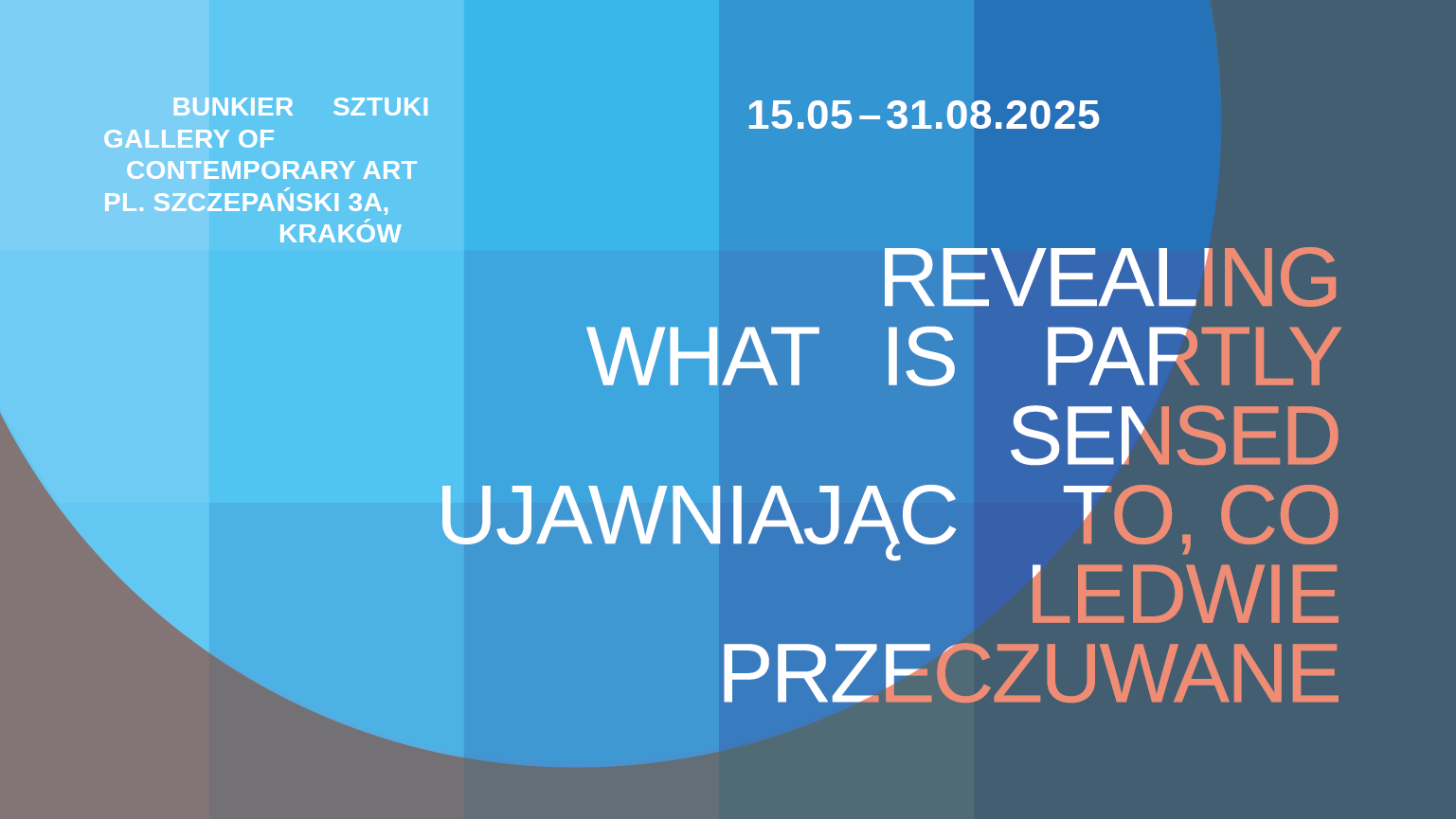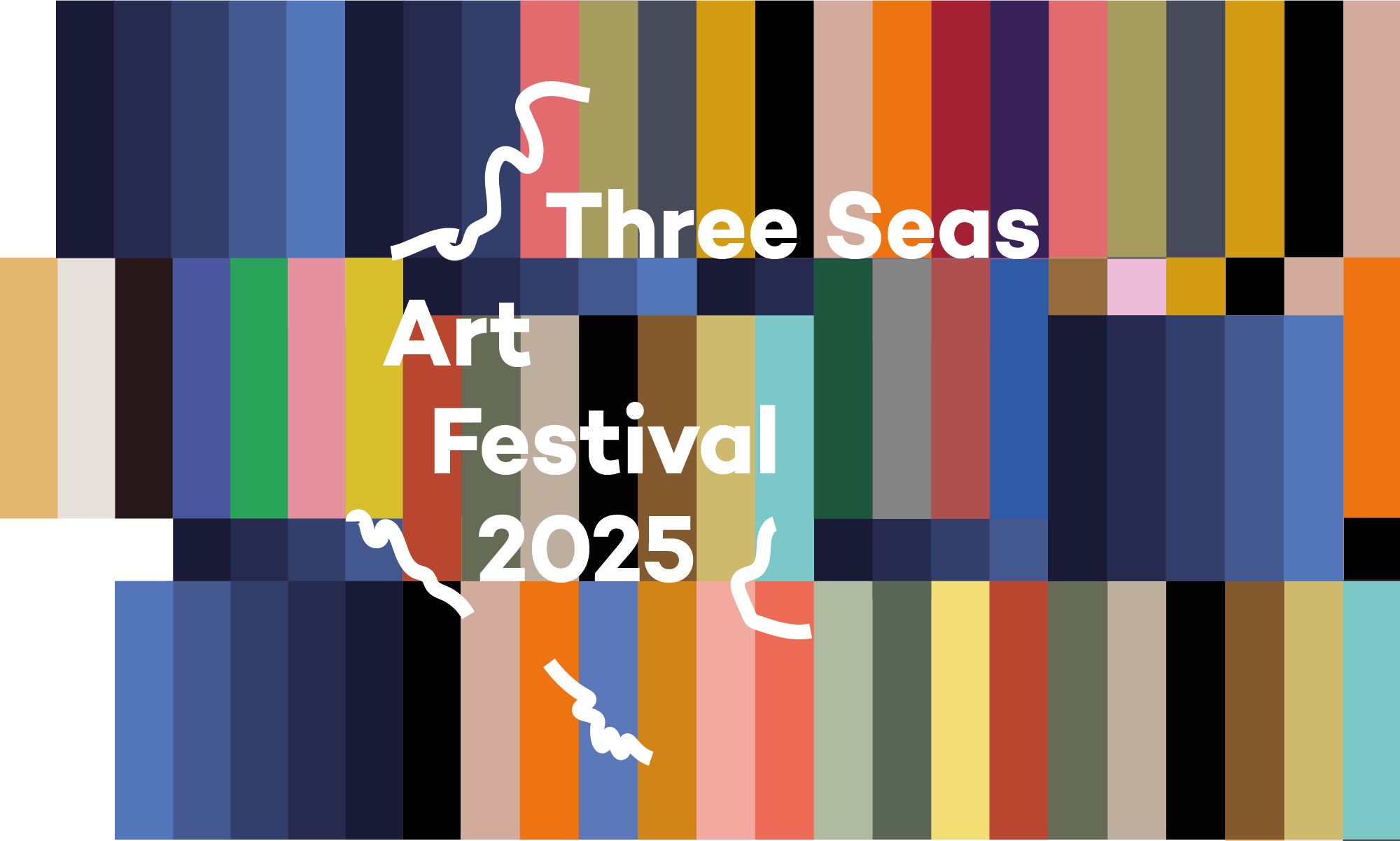
Przed nami kulminacyjne wydarzenia Festiwalu Sztuki Trójmorza 2025. Już 14 maja zapraszamy na otwarcie głównej wystawy festiwalu „Ujawniając to, co ledwie przeczuwane / Revealing what is partly sensed”.
Gospodarzem i współorganizatorem wystawy jest Galeria Sztuki Współczesnej Bunkier Sztuki w Krakowie.
Tytuł wystawy został zaczerpnięty z eseju duńskiej antropolożki społecznej Kirsten Hastrup. Autorka stwierdza w nim, że kreatywność jest procesem, który zachodzi pomiędzy utalentowanymi jednostkami a kulturą, w której funkcjonują. Bycie kreatywnym wiąże się, jej zdaniem, nie tylko z wynajdywaniem rzeczy wcześniej nieistniejących, ale także z proponowaniem nowego sposobu rozumienia znanej nam już rzeczywistości poprzez ujawnianie tego, co zaledwie przeczuwane. Zadaniem zespołu kuratorskiego było właśnie wskazanie splotów i kluczowych zagadnień, uchwycenie punktów wspólnych w twórczości osób artystycznych z 14 krajów, które wzięły udział w projekcie.
Organizatorzy zaprosili do współpracy instytucje kultury z państw należących do Inicjatywy Trójmorza: Austrii, Bułgarii, Czech, Grecji, Litwy, Polski, Rumunii, Słowacji, Słowenii, i Węgier, a także z Danii, Turcji i Ukrainy oraz Społeczeństwa Obywatelskiego Białorusi. Każda z instytucji wytypowała osobę kuratorską oraz osobę lub kolektyw artystyczny, którzy zaproponowali pracę na wybrany przez siebie temat spośród szerokiego wachlarza zagadnień związanych z ideą sprawiedliwego rozwoju. Wspólną wystawę poprzedziły symultaniczne rezydencje kuratorsko-artystyczne. Część dzieł powstała podczas pobytu artystek i artystów w Krakowie, inni wykorzystali ten czas na prace badawcze.
Na wystawie zaprezentujemy obiekty, instalacje, wideo oraz fotografie stworzone specjalnie w ramach tego projektu. Próbując nakreślić punkty wspólne, zespół kuratorski wybrał pięć pojęć, które mogą pełnić funkcję drogowskazów podczas zwiedzania: zamieszkiwanie, środowisko naturalne, materialność, wspólnotowość i technologia. Wszystkie dzieła sytuują się na styku tych haseł, wskazując na zachodzące między nimi, nieoczywiste relacje. W kilku pojawia się wątek Krakowa – dla niektórych realizacji miasto okazało się ważnym źródłem inspiracji i punktem odniesienia.
Zgodnie z ideą inicjatorów – instytucji tworzących Sieć Współpracy Kulturalnej Inicjatywy Trójmorza (3SICCN) – sztuka ma być sposobem przewidywania i prototypowania rozwiązań odpowiadających najważniejszym wyzwaniom współczesności. Być może w tym kontekście prezentowane prace także są zapowiedzią nowego porządku, którego istnienie zaledwie przeczuwamy.
Rezydenci festiwalu, zespoły kuratorsko-artystyczne biorące udział w wystawie:
Margarethe Makovec, Wendelin Pressl (Austria)
Vera Mlechevska, Dimitar Shopov (Bułgaria)
Barbora Kundračíková, Pavla Beranová, Jiří Suchánek (Czechy)
Kristian Handberg, Kristoffer Ørum (Dania)
Elli Leventaki, Morus Project – Kleopatra Tsali, Hanna Norrna, Irini Gonou (Grecja)
Alexandra Tamásová, Erik Sikora (Słowacja)
Áron Fenyvesi, Rita Süveges (Węgry)
Vaiva Jucevičiūtė-Bartkevičienė, Ričardas Bartkevičius (Litwa)
Weronika Plińska, Anna Pichura (Polska)
Călin Corneliu DAN, Ciprian Mureșan (Rumunia)
Kaja Kraner, Uršula Berlot Pompe (Słowenia)
Ostap Manulyak, Grupa NURT – Mykhaylo Barabash, Tereza Barabash, Roman Haideichuk, Yaryna Shumska (Ukraina)
Olga Mzhelskaya, Ala Savashevich (obywatelskie społeczeństwo Białorusi)
Melike Bayik, Gözde Ju (Turcja)
Kuratorki wystawy: Kata Balázs-Miklós, Weronika Plińska, Agnieszka Sachar
Wystawę będzie można oglądać do 31 sierpnia 2025.
…………………………………………………………………………………………………….
English
The culminating events of the Three Seas Art Festival 2025 are ahead of us. On May 14, we invite you to the opening of the main exhibition of the festival „Revealing what is partly sensed”.
The host and co-organizer of the exhibition is the Bunkier Sztuki Gallery of Contemporary Art in Krakow.
The title of the exhibition was taken from an essay by Danish social anthropologist Kirsten Hastrup. The author states that creativity is a process that takes place between talented individuals and the culture in which they function. In her opinion, being creative is associated not only with inventing things that did not exist before, but also with proposing a new way of understanding the reality we already know by revealing what is partly sensed. The task of the curatorial team was to indicate the connections and key issues, to capture common points in the work of artists from 14 countries who took part in the project.
The organizers invited cultural institutions from the countries belonging to the Three Seas Initiative: Austria, Bulgaria, the Czech Republic, Greece, Lithuania, Poland, Romania, Slovakia, Slovenia, and Hungary, as well as from Denmark, Turkey, Ukraine, and the Civil Society of Belarus to cooperate. Each institution selected a curator and an artistic person or collective who proposed a work on a topic of their choice from a wide range of issues related to the idea of equitable development. The joint exhibition was preceded by simultaneous curatorial and artistic residencies. Some of the works were created during the artists’ stay in Krakow, while others used this time for research. The exhibition will present objects, installations, videos, and photographs created specifically for this project. In an attempt to outline common points, the curatorial team selected five concepts that can serve as signposts during the tour: habitation, natural environment, materiality, community, and technology. All works are situated at the junction of these slogans, indicating the non-obvious relationships between them. In several, the thread of Krakow appears – for some projects, the city turned out to be an important source of inspiration and a point of reference.
According to the idea of the initiators – institutions creating the Three Seas Initiative Cultural Cooperation Network (3SICCN) – art is to be a way of anticipating and prototyping solutions that respond to the most important challenges of modern times. Perhaps in this context, the presented works are also a harbinger of a new order, the existence of which we only just sense.
Festival residents, curatorial and artistic teams taking part in the exhibition:
Margarethe Makovec, Wendelin Pressl (Austria)
Vera Mlechevska, Dimitar Shopov (Bulgaria)
Barbora Kundračíková, Pavla Beranová, Jiří Suchánek (Czech Republic)
Kristian Handberg, Kristoffer Ørum (Denmark)
Elli Leventaki, Morus Project – Kleopatra Tsali, Hanna Norrna, Irini Gonou (Greece)
Alexandra Tamásová, Erik Sikora (Slovakia)
Áron Fenyvesi, Rita Süveges (Hungary)
Vaiva Jucevičiūtė-Bartkevičienė, Ričardas Bartkevičius (Lithuania)
Weronika Plińska, Anna Pichura (Poland)
Călin Corneliu DAN, Ciprian Mureșan (Romania)
Kaja Kraner, Uršula Berlot Pompe (Slovenia)
Ostap Manulyak, NURT Group – Mykhaylo Barabash, Tereza Barabash, Roman Haideichuk, Yaryna Shumska (Ukraine)
Olga Mzhelskaya, Ala Savashevich (civil society of Belarus)
Melike Bayik, Gözde Ju (Turkey)
Curators of the exhibition: Kata Balázs-Miklós, Weronika Plińska, Agnieszka Sachar
The exhibition will be open until August 31, 2025.
